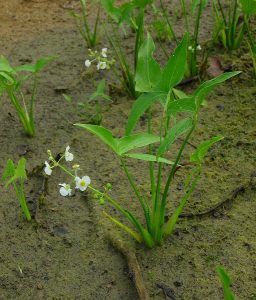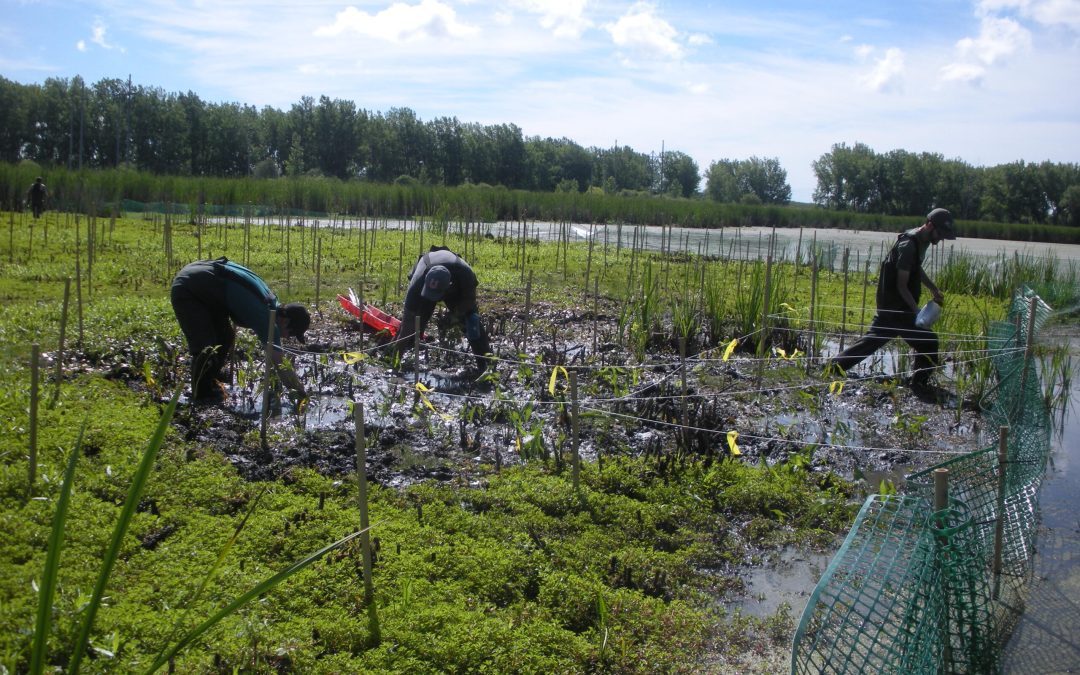
WNY PRISM Crew and Tifft Nature Preserve Staff getting ready to plant native species as part of a restoration project. photo credit: Dave Spiering, Tifft Nature Preserve
WNY PRISM assisted staff at Tifft Nature Preserve this summer with planting over 2250 native plant plugs, as part of their continuing efforts to increase the diversity of native plants as well as combat the invasive plants which threaten these habitats. Over the course of two years, Tifft has planted over 30,000 plugs, including 20 different native species. If you are not already familiar with the site, Tifft Nature Preserve is a 264 acre refuge located along Buffalo’s Outer Harbor that has been designated an Important Bird Area due to the diversity of migratory species using the area. The ecological importance of this area was recognized in the early 1970’s, and what was once a site for dumping garbage, is now a treasured natural area with ponds, marshes, and woodlands for visitors to explore along the trails and boardwalks.

Crew returns from planting native species in the wetland interior. photo credit: Andrea Locke, WNY PRISM
Tifft’s cattail marsh is one of the largest wetlands in Erie County, providing much needed nesting habitats for rare marsh birds. However, the site is also heavily infested with invasive species. One of the more aggressive invasive plants found within the wetlands at Tifft is common reed, or phragmites (Phragmites australis). In the years prior to planting, phragmites, along with some other invasive species, was removed from areas designated as restoration/planting units. Phragmites not only outcompetes the native plants within the marsh and ponds, it also creates an unsuitable
habitat for birds who depend on Tifft as a stopping point during their migration. The successful removal of phragmites is essential to the success of these native plantings.

Arrowhead is one of 20 different species planted at Tifft Nature Preserve as part of invasive species management and restoration efforts.
The WNY PRISM Crew suited up in chest waders and paddled out in canoes with Dave Spiering, Tifft Ecologist, and Kevin Skrzynski, Ecology Technician, to plant 6 different native species at the edge of the cattails. Arrowhead (Sagittaria latifolia), water plantain (Alisma plantago aquatica), rice-cut grass (Leersia oryzoides) and American sweetflag (Acorus americanus), along with a few American bur-reed (Sparganium americanum) and swamp smartweed (Persicaria hyperpiperoides), were planted within the network of wooden stakes created in the weeks prior to guide the planting process and to provide protection for the plants from animals who would love to otherwise feast upon them. Unlike your traditional planting, the thick nutrient rich mud of the marsh posed a unique and fun challenge as we slowly maneuvered from one square to the next, ensuring each species was planted and marked appropriately.
In contrast to the invasive species removal projects the WNY PRISM Crew has done throughout this season, it was great to experience the next step in invasive species management – restoration. Learning more about our native wetland plants and continuing to contribute to valuable habitat for wildlife in one of the most frequented nature preserves of WNY is very rewarding. We look forward to seeing the positive impact from planting these native species at Tifft in the years to come.
This article was written by Emily Dyett, 2016 WNY PRISM Invasive Species Management Assistant


